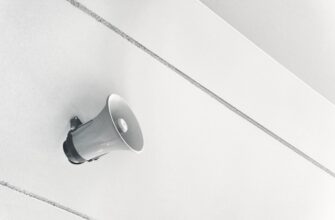## Introduction
Dollar-cost averaging (DCA) into Solana (SOL) on Coinbase offers a disciplined approach to navigating crypto volatility. By automating daily purchases, you mitigate emotional trading and spread risk across market cycles. This guide details how to implement a daily DCA strategy for Solana on Coinbase while prioritizing risk management—essential for surviving crypto’s turbulent landscape.
## Why DCA Solana on Coinbase?
Solana’s high-growth potential comes with extreme volatility. DCA smooths out price swings by:
– **Reducing timing risk**: Avoids buying peaks by spreading investments.
– **Automating discipline**: Removes emotional decisions.
– **Leveraging Coinbase’s ecosystem**: Secure, user-friendly recurring buys and real-time tracking.
Daily DCA captures more price points than weekly/monthly approaches, accelerating cost averaging during dips.
## Setting Up Daily DCA for Solana on Coinbase
Follow these steps:
1. **Create/review Coinbase account**: Ensure KYC verification is complete.
2. **Fund USD wallet**: Transfer fiat to avoid card processing fees.
3. **Navigate to “Recurring Buys”**: Under “Trade” > “Recurring Buys.”
4. **Configure settings**:
– Asset: **Solana (SOL)**
– Amount: Set daily investment (e.g., $5–$50)
– Frequency: **Daily**
– Funding source: USD wallet
5. **Confirm and activate**: Review fees before submission.
*Note: Coinbase charges a spread (0.5–2%) + transaction fee per buy. Minimize costs with higher single purchases, but daily DCA’s risk benefits often outweigh fees.*
## Daily Timeframe Risk Management Tactics
Protect capital with these strategies:
– **Allocation limits**: Dedicate only 5–10% of your portfolio to Solana. Never DCA with emergency funds.
– **Stop-loss guardrails**: Set a 30–40% trailing stop-loss on your *total position* (not per buy) to limit downside.
– **Diversification**: Pair SOL DCA with stablecoins or Bitcoin to hedge volatility.
– **Volatility filters**: Pause buys if SOL drops >15% in a day; resume when trend stabilizes.
*Daily DCA Advantage*: Frequent purchases lower your average cost faster during bear markets compared to weekly setups.
## Monitoring and Optimizing Your Strategy
Review monthly:
– **Track average entry price**: Compare to SOL’s current value.
– **Adjust amounts**: Increase DCA during prolonged dips (if risk allows).
– **Rebalance quarterly**: If SOL exceeds 15% of your portfolio, trim profits into stablecoins.
Exit strategy: Sell 20–30% of holdings after 100%+ gains to secure profits.
## Frequently Asked Questions
**Q: Is daily DCA on Solana better than weekly?**
A: Daily averaging captures more price fluctuations, reducing volatility impact faster. However, weekly DCA lowers transaction fees. Choose daily for aggressive cost smoothing.
**Q: What’s the ideal daily DCA amount for Solana?**
A: Start with $5–$20 daily. Ensure it’s an amount you won’t need for 3–5 years. Never risk essential expenses.
**Q: How do Coinbase fees impact daily DCA?**
A: Fees are percentage-based, so smaller daily buys have higher relative costs. Use Coinbase Advanced for reduced fees (0.6% per trade) if trading >$200 daily.
**Q: Should I stop DCA if Solana crashes?**
A: No—crashes are when DCA shines. Continue buying to lower your average cost. Only pause if SOL’s fundamentals deteriorate (e.g., network outages, security breaches).
**Q: Can I automate risk management on Coinbase?**
A: Yes! Set price alerts and stop-loss orders under “Advanced Trade.” Pair these with DCA for a semi-automated safety net.
## Conclusion
A daily DCA strategy for Solana on Coinbase turns volatility into an advantage while rigorous risk management protects your capital. By automating buys, limiting allocations, and setting stop-losses, you build SOL exposure systematically. Start small, stay consistent, and let compounding work in your favor—no matter what the daily charts show.








